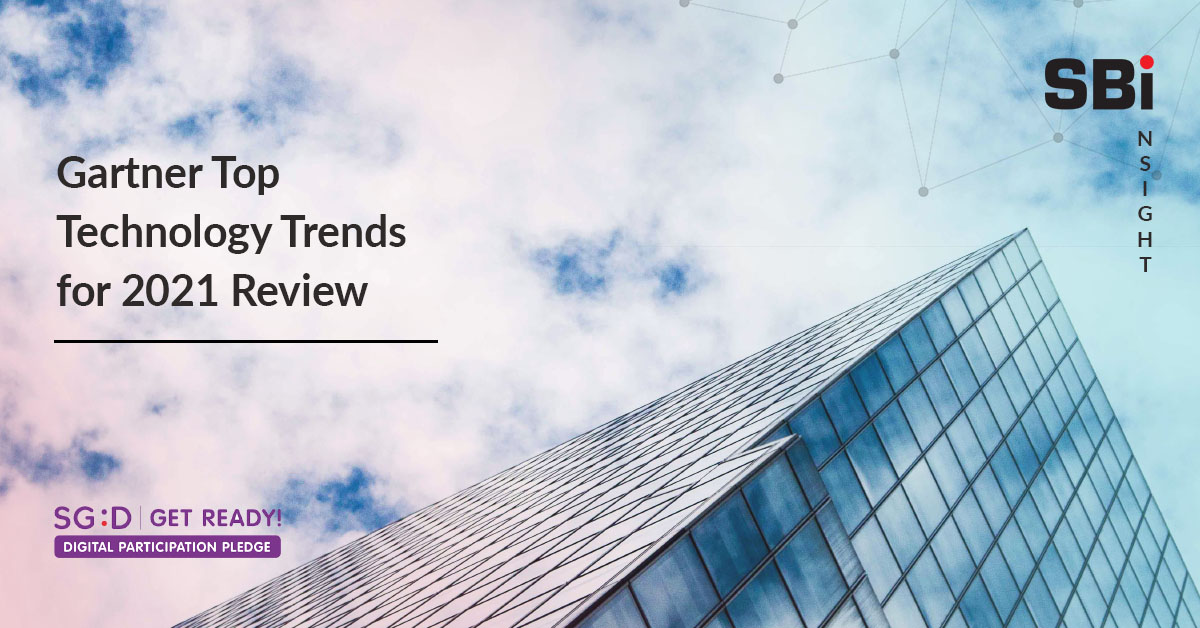Back in October 2020, Gartner, Inc. announced its top nine strategic technology trends for 2021. It highlights the trends that are set to drive significant disruptions and opportunities in technology which organizations would do well in exploring for the upcoming years.
Many of the highlighted trends are linked in response to the COVID-19 crisis and aims to drive growth despite the world-wide pandemic.
“The need for operational resiliency across enterprise functions has never been greater,” said Brian Burke, research vice president at Gartner.
“As organizations journey from responding to the COVID-19 crisis to driving growth, they must focus on the three main areas that form the themes of this year’s trends: people centricity, location independence, and resilient delivery,” Burke said.
Until today, businesses have benefited from following the technology roadmap laid out by digital pioneers. Now, digital technology is evolving from yesterday’s advantage to today’s basic expectation.
Here are Gartner, Inc.’s top strategic trends which highlight areas of opportunity and ways for organizations to differentiate themselves from competitors;
Internet of Behaviours (IoB)
IoB is the combination of technologies that connects an individual’s data (for example; facial recognition, location tracking, etc.) with associated behavioural events like device usage, cash purchases or health protocols in response to COVID-19.
This can be used to influence human behaviour and monitor compliance.
The collection and use of such data to drive behaviours is called the Internet of Behaviour (IoB). As organizations improve not only in the amount of data they capture, but also how they combine and use the data gathered from different sources, the IoB will continue to affect how organizations interact with people.
AI engineering
Getting the most value from Artificial Intelligence (AI) investments requires a robust AI engineering strategy to drive scalability, better performance, reliability, and interpretability of AI models. Many companies have had issues with AI projects due to governance, scalability, and maintainability.
Total-experience
Total-experience combines customer, user and employee experiences, ultimately multi-experiences are needed to impact and transform business outcomes. The overlap in these experiences can be improved with technology, enabling companies to take advantage of disruptive aspects of the current pandemic such as distributed customers and remote work.
Privacy-enhancing computation
Unlike standard data-at-rest security controls, privacy-enhancing computation protects data in use while maintaining secrecy and privacy. Gartner predicts that by 2025, 50% of large organisations will implement privacy-enhancing computation for processing data in untrusted environments, especially as privacy compliance and regulations mature and become more widespread.
Hyper automation
“This has been a trend for some years, but the pandemic has pushed hyper automation even further up the strategic trend hierarchy,” says Gartner.
Used to rapidly identify vet and automate IT processes, the requirements to be ‘digital first’ in the wake of a worldwide shift to remote working have surged. Without hyper automation, companies with legacy business processes that are not streamlined will suffer from expensive and extensive issues due to this inefficient approach.
Distributed cloud
Distributed cloud is the distribution of public cloud services to different physical locations. However, the operation of the services remains the responsibility of the public cloud provider.
By having these organization services physically closer, latency is reduced as are the costs of data, helping to ensure compliance with laws that dictate data must remain in a specific geographical region. Gartner notes that distributed cloud is generally the future of cloud technology.
Anywhere operations
Anywhere operations is a model that has been underscored due to the Covid-19 crisis and will remain after the pandemic is over. Given the fact that more businesses look to be done remotely, this model facilitates business being done anywhere.
Cybersecurity mesh
The fact that landscape expands with a remote workforce is an increasing threat, but the cybersecurity mesh offers enhanced security to help with this new reality. The cybersecurity mesh enables identity to become the security perimeter, allowing anyone to access digital assets securely. Having a centralized policy orchestration and policy enforcement helps facilitate a more responsive security approach.
Intelligent composable business
This trend emphasizes the improvement of decision-making through accessing better information and responding more efficiently to it.
Intelligent composable businesses can adapt and rearrange themselves based on changes to the business. The pace of change is ever-increasing, and this will continue to drive faster developments for digital transformation. Data must be available in a timely fashion to enable the agility required to succeed in this environment.
Conclusion
Innovation around the application of existing technology is rapidly changing how organizations operate and how we interact with the world. Leaps in computing capacity, data capture and connectivity are accelerating this change.
Companies must deliver more human-centric experiences, in line with what people have come to expect. Covid-19 leaves a big impact to our workforce in 2020, which accelerates and forces our technology adoption. So in 2021, we might expect a time of innovation as people better leverage technology. Leading in the future will demand rethinking core assumptions about how an enterprise works and redefining the intersection between people and technology.
Follow us on Linkedin & Facebook
Follow us on Linkedin

